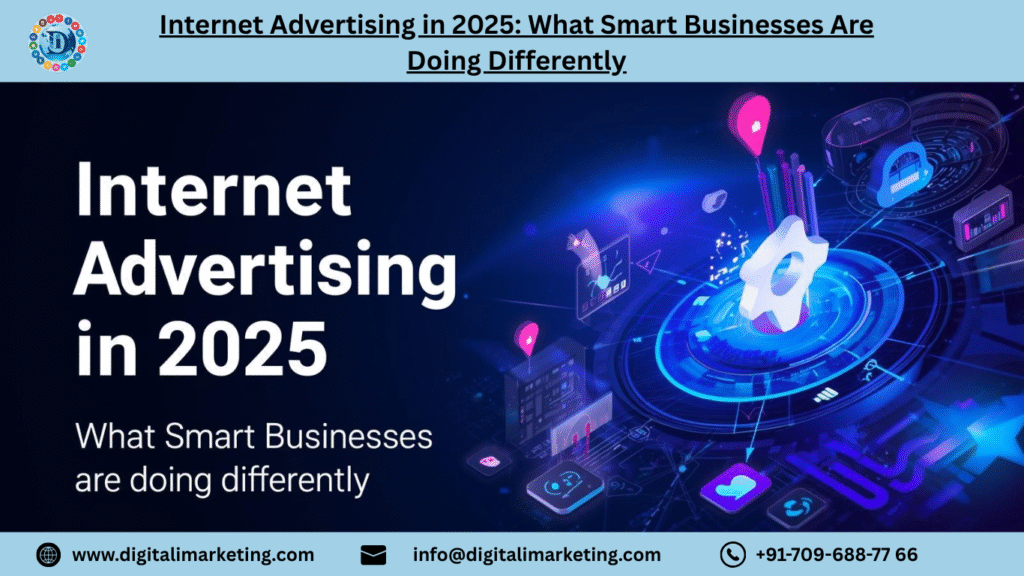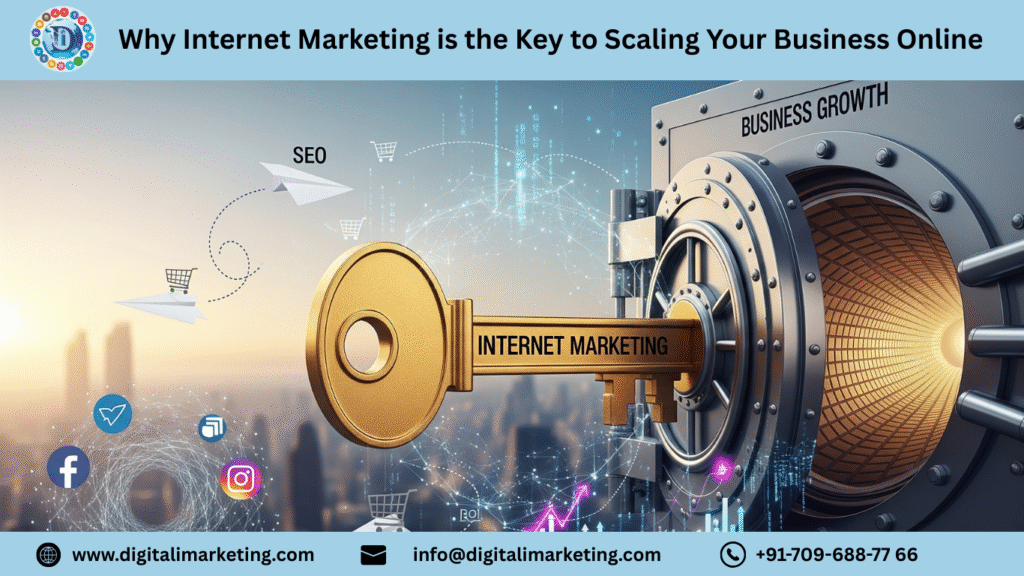
In a competitive digital environment, standing out isn’t just about spending more—it’s about working smarter. Today’s leading companies are rethinking how they use internet advertising to get better ROI and sustainable growth, not just temporary spikes.
That’s why more businesses are partnering with performance-first agencies. Learn practical approaches from teams like Digital i Marketing that combine data, technology, and creative to build advertising systems that scale.
What’s Changing in Internet Advertising
1. AI, Automation, and Predictive Analytics
Smart advertisers are using AI to optimize campaign performance in real time. From predictive audience targeting to automated bid adjustments and creative optimization, these tools reduce wastage and improve conversion rates. Real-time decisions about which creative to show, when, and to whom are now expected — not optional.
2. Regional, Vernacular & Localized Content
India’s internet audience is expanding rapidly beyond metros. Ads created in regional languages and tailored to local cultural nuances are outperforming generic national campaigns. Brands that adapt messaging, visuals, and offers for local audiences see better engagement and higher conversion rates.
3. Short-Form Video & Immersive Formats
Short-form video (Reels, Shorts, etc.) dominates attention. Businesses use short videos for awareness and direct response—embedding clear CTAs and quick paths to conversion. Immersive formats such as AR try-ons, interactive polls, and shoppable videos are also gaining traction for product-driven campaigns.
How Smart Businesses Leverage These Shifts
Performance Over Visibility
Top advertisers prioritize metrics that tie directly to business outcomes: cost-per-lead (CPL), conversion rate, customer acquisition cost (CAC), and return on ad spend (ROAS). Campaigns are built backward from the desired conversion—landing pages and follow-up systems are designed first, then traffic sources are chosen to feed the funnel.
Multi-Channel Strategy
Instead of relying on one platform, effective businesses diversify their media mix: Google Search for intent, Meta for discovery, YouTube and short video for storytelling, programmatic for scale, and WhatsApp or native forms for conversational capture. Diversification reduces platform risk and helps discover where the best units of demand exist for a given offer.
First-Party Data & Privacy Compliance
With third-party cookies being phased out and privacy concerns rising, businesses are investing in first-party data collection: email subscribers, CRM records, and consent-driven behavioral data. Brands that build reliable first-party datasets can retarget and personalize without depending on third-party signals.
Key Trends Smart Businesses Are Adopting in India
Mobile-First Creatives: Prioritize low-bandwidth, quick-load ads with concise CTAs for mobile users.
Hyper-Local Targeting: Use radius targeting, time-of-day schedules, and local offers to capture nearby customers.
Programmatic & Dynamic Creative: Automate placements and test multi-variant creatives dynamically for better relevance.
Conversational Marketing: Integrate click-to-WhatsApp and chatbots to shorten response time and increase lead quality.
Voice & Natural Language Optimization: Optimize for voice and long-tail queries as voice search grows.
Common Challenges — And How Smart Teams Solve Them
Ad fatigue and creative decay
Solution: Rotate creatives frequently, use user-generated content, and lean on dynamic creative optimization to keep messages fresh.
Rising CPCs and competition
Solution: Improve post-click experience (landing page speed and relevance), tighten audience definitions, and use first-party signals to bid smarter.
Data fragmentation across platforms
Solution: Consolidate tracking via server-side tagging, CRM integration, and unified dashboards to attribute correctly and act fast.
Privacy and regulatory shifts
Solution: Implement consent-first tracking, transparent data policies, and invest in cookieless targeting methods.
How Your Business Should Respond — Tactical Checklist
Audit current ad performance: focus on CPL, CAC, and conversion rate—not just clicks.
Test short-form video ads with direct CTAs and measure direct response.
Start building first-party data channels: newsletters, gated content, and post-purchase prompts.
Localize campaigns by language and cultural context for Tier-2 and Tier-3 markets.
Use AI-assisted tools to automate creative testing and bid management.
Integrate ads with CRM and conversational channels for instant follow-up.
If you want an audit of your ad performance, campaign setup, or localization strategy, our team can help — we run ad audits and funnel reviews to uncover quick wins and scaleable opportunities.
Explore More from Digital i Marketing Blogs
The Evolution of Online Advertising: Past, Present, and Future
Google Ads vs Facebook Ads: Which Delivers Better ROI for Indian Businesses?
Final Thoughts
Internet advertising in 2025 is not about doing more—it’s about doing smarter. The brands that win will be those that combine localized creative, AI-driven optimization, privacy-smart data strategies, and multi-channel funnels that convert. Moving from generic campaigns to systems that capture intent, nurture leads, and measure impact is what separates short-term spikes from long-term growth.
- Why Internet Advertising Still Delivers the Best ROI for Businesses – 2025 - October 11, 2025
- Internet Advertising in 2025: What Smart Businesses Are Doing Differently – 2025 - October 11, 2025
- Finding the Best Digital Marketing Agency in India: Key Checklist for 2025 - September 10, 2025
